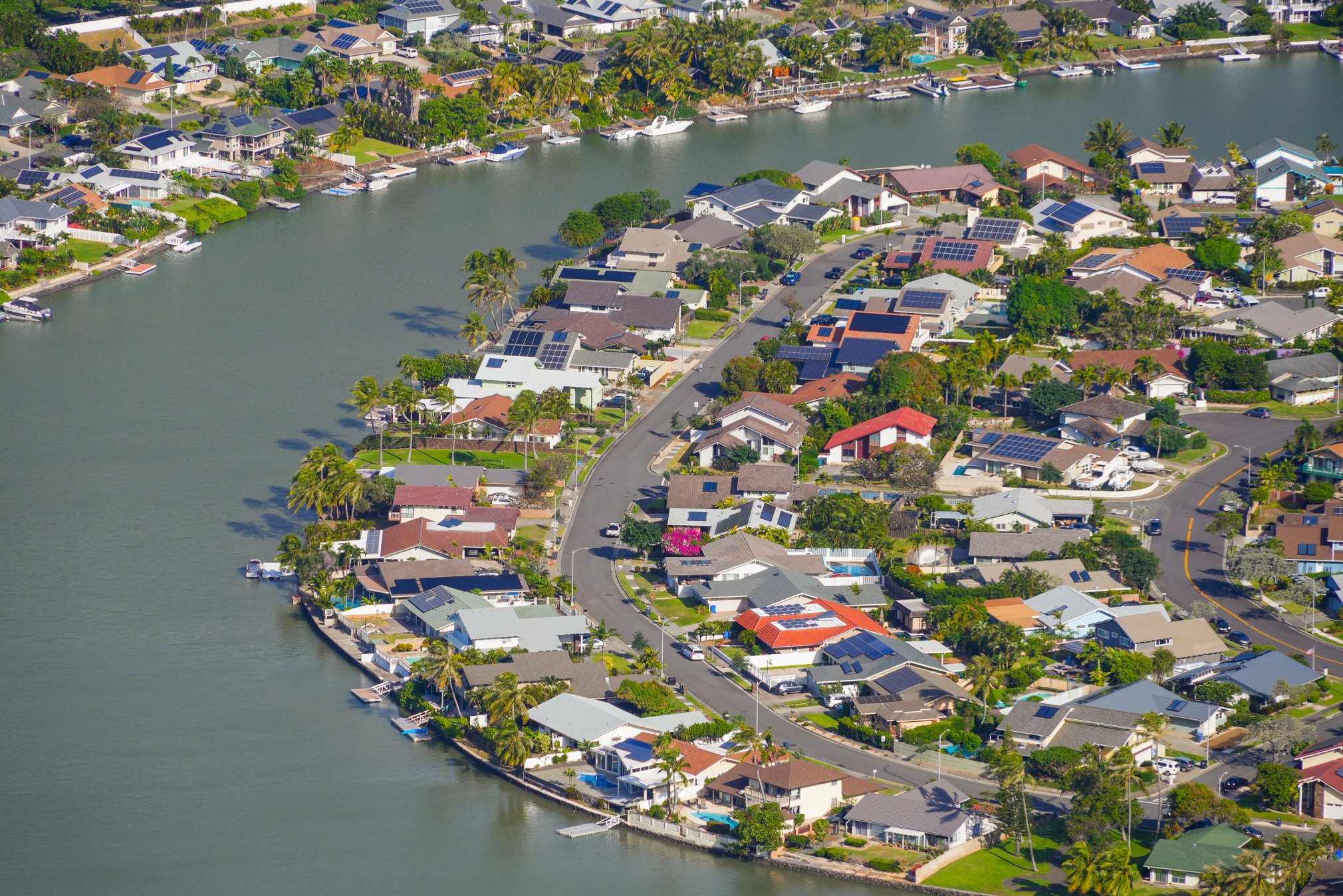Better information and access to real-time data can protect communities and save lives.
Imagine waking up to the acrid smell of smoke, or watching floodwaters rise toward your doorstep. In these moments of crisis, minutes matter. Your most urgent need is trustworthy information: Should you evacuate? What should you bring? Where should you go? Which updates can you trust? As climate change intensifies natural disasters, these aren’t hypothetical questions — they’re scenarios that more Americans face each year.
While government agencies play an important role in coordinating emergency response efforts, the widespread adoption of smartphones and social media has transformed how we interact with news and information. Historically, radio stations and TV channels disseminated valuable information to broad audiences, advising people on when and where to evacuate as natural disasters loomed. As the media environment has become less centralized, the reach of these individual outlets has decreased and the boundaries between news creators and consumers — as well as between emergency services and the public — have become increasingly fluid.
Recent disasters have exposed the critical gaps in this increasingly fractured alert system. During the January 2025 Los Angeles wildfires, residents faced a confusing landscape of emergency information: errant evacuation orders, delayed alerts, and first-person accounts on social media. When it became clear that residents needed more than government-issued evacuation orders and press conferences led by local officials, market solutions emerged as valuable tools providing information. Within days, 1.5 million people downloaded Watch Duty, a donation-funded app providing real-time wildfire updates using verified reports from first responders.
Watch Duty is an inspiring example of how new tech solutions and community-powered platforms are helping people navigate disaster scenarios, build trust and preparedness in communities, and ultimately save lives and property. The public and private sectors can learn from the success of this nimble nonprofit app and other emerging technologies to forge new tools that help communities respond to disasters.
In today’s hyper-connected world, government agencies and private citizens alike have unprecedented capacity to monitor environments through sensors, satellites, and citizen documentation. These vast data sources can provide life-saving information in times of disaster, but too often these resources are inaccessible to people when they need them most. Open data initiatives democratize access to critical emergency information. Consider FloodNet NYC, a network of flood sensors that provides real-time data about water levels across New York City neighborhoods. By making this data freely available, FloodNet enables government agencies, researchers, and community organizations to better understand, predict, and respond to flooding events. The dense trove of visual information collected by civic and personal tech — static street view images, traffic cameras, or even dash cams in personal vehicles — could be used for real-time scene reports to guide first responders and emergency planners. Researchers are exploring ways to use vision language models to make these massive datasets more accessible and usable.
But having data isn’t enough — the real opportunity lies in making it actionable. While FloodNet’s sensors can detect rising water levels, residents still need clear guidance about what those measurements mean for their safety. Government agencies already play a vital role by translating raw data into clear directives, like which neighborhoods should evacuate during a disaster. However, agencies have an opportunity to share even more tailored recommendations — which streets to avoid during a flood, when and where to move vehicles, and how to protect homes and businesses. Artificial intelligence, already helping cities predict flood risks and optimize emergency response, could power more sophisticated wayfinding tools that adapt to rapidly changing conditions. During evacuations, AI could process multiple data streams — traffic patterns, weather forecasts, emergency vehicle locations — to suggest the safest routes for specific neighborhoods or even individual households.
The surge in Watch Duty downloads during the Los Angeles wildfires revealed that people will quickly adopt new communications tools when they deliver clear, actionable emergency information. The platform’s success stems from its laser focus on user needs during a crisis — providing real-time updates about fire locations, evacuation zones, and air quality in a simple, accessible format. Founded by a Northern California resident frustrated by a lack of timely information about a wildfire threatening his home, the app has grown to cover 22 states across the U.S. But its volunteer-driven, donation-funded model is challenging to scale. Watch Duty’s user-centered approach could be meaningfully applied to hurricanes, earthquakes, or even public health emergencies, but it would require consistent revenue to ensure reliability and scale. The technical blueprint exists; what’s missing is a business model that brings together government authority, reliable funding streams, and tech-sector agility. Innovative funding models, including public-private partnerships or challenge-based procurement, can play a crucial role in bridging the gap.
Emerging technologies can transform how we navigate crises in real time. But deploying these technologies effectively requires careful consideration of access, equity, privacy, and safety. The most sophisticated solution means little if it’s not accessible to those who need it most. Effective emergency communications are rooted in trust; technology providers must take seriously the privacy and safety of their users by managing their personal data responsibly.
The tools, technologies, and data to help people navigate disasters exist today — what’s missing are the models and mechanisms to deploy them at scale. This is a problem and opportunity that should galvanize action across sectors: state and local governments seeking to protect their communities, tech entrepreneurs looking to create sustainable impact, geospatial data providers sitting on valuable information, disaster relief organizations working to coordinate response efforts, and ultimately, all of us living in an era of intensifying climate risks. The moment for innovation is now, before the next disaster strikes.


